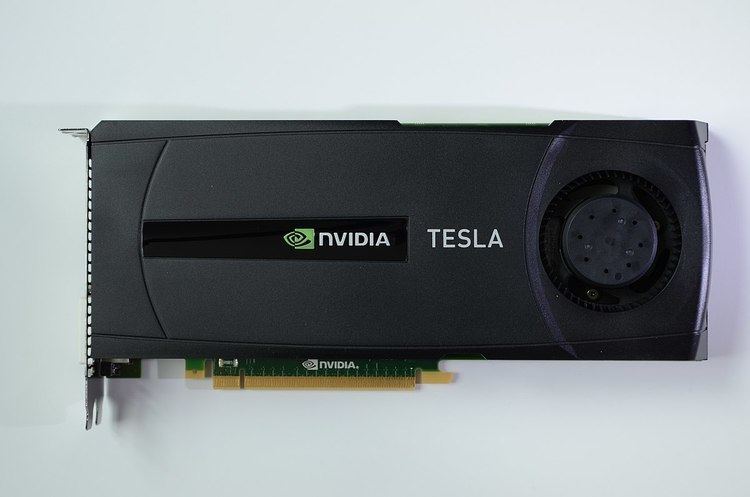Nvidia Tesla is Nvidia's brand name for their products targeting stream processing and/or general purpose GPU. Products use GPUs from the G80 series onward. The underlying Tesla microarchitecture of the GPUs and the Tesla product line are named after pioneering electrical engineer Nikola Tesla.
With their very high computational power (measured in floating point operations per second or FLOPS) compared to microprocessors, the Tesla products target the high-performance computing market. As of 2012, Nvidia Teslas power some of the world's fastest supercomputers, including Titan at Oak Ridge National Laboratory and Tianhe-1A, in Tianjin, China.
The lack of ability to output images to a display was the main difference between Tesla products and the consumer level GeForce cards and the professional level Nvidia Quadro cards, but the latest Tesla C-class products include one Dual-Link DVI port. For equivalent single precision output, Fermi-based Nvidia GeForce cards have four times less dual-precision performance. Tesla products primarily operate:
in simulations and in large scale calculations (especially floating-point calculations)for high-end image generation for applications in professional and scientific fieldswith the use of OpenCL or CUDA.Nvidia intends to offer ARMv8 processor cores embedded into future Tesla GPUs as part of Project Denver. This will be a 64-bit follow on to the 32-bit Tegra chips.
The defense industry currently accounts for less than a sixth of Tesla sales, but Sumit Gupta predicts further sales to the geospatial intelligence market.
Specifications and configurations
1 Specifications not specified by Nvidia assumed to be based on the GeForce 8800GTX2 Specifications not specified by Nvidia assumed to be based on the GeForce GTX 2803 Specifications not specified by Nvidia are assumed to be based on the GeForce 400 series4 With ECC on, a portion of the dedicated memory is used for ECC bits, so the available user memory is reduced by 12.5%. (e.g. 4 GB total memory yields 3.5 GB of user available memory.)5 To calculate the processing power see Tesla (microarchitecture)#Performance, Fermi (microarchitecture)#Performance, Kepler (microarchitecture)#Performance, Maxwell (microarchitecture)#Performance, or Pascal (microarchitecture)#Performance. A number range specifies the minimum and maximum processing power at, respectively, the base clock and maximum boost clock.6 Specifications not specified by Nvidia assumed to be based on the Quadro FX 58007 GPU Boost is a default feature that increases the core clock rate while remaining under the card's predetermined power budget. Multiple boost clocks are available, but this table lists the highest clock supported by each card.8 Core architecture version according to the CUDA programming guide.For the basic specifications of Tesla, refer to the GPU Computing Processor specifications.Due to Tesla's non-output nature, fillrate and graphics API compatibility are not applicable.
